Now that the weather is getting cooler and almost rainy, it is time to relocate overgrown lily of the Nile. Quite a bit of it has slowly climbed over stone retaining walls to encroach into walkways. I remove rhizomes that are on top of walls, as well as any that are within a foot or so of the walls. After I divide and groom them, I install them where they will be more of an asset to the landscapes. They settle in with cool and rainy wintry weather, so should be ready to grow as soon as the weather gets warmer in spring. I neglected to get any before and after pictures to show where they came from and where they went to, (or to get six pictures).
1. Roots of lily of the Nile can hold firmly onto a silty riverbank as the river floods above. They are impressively densely meshed. They are fleshy though, and therefore easily cut.
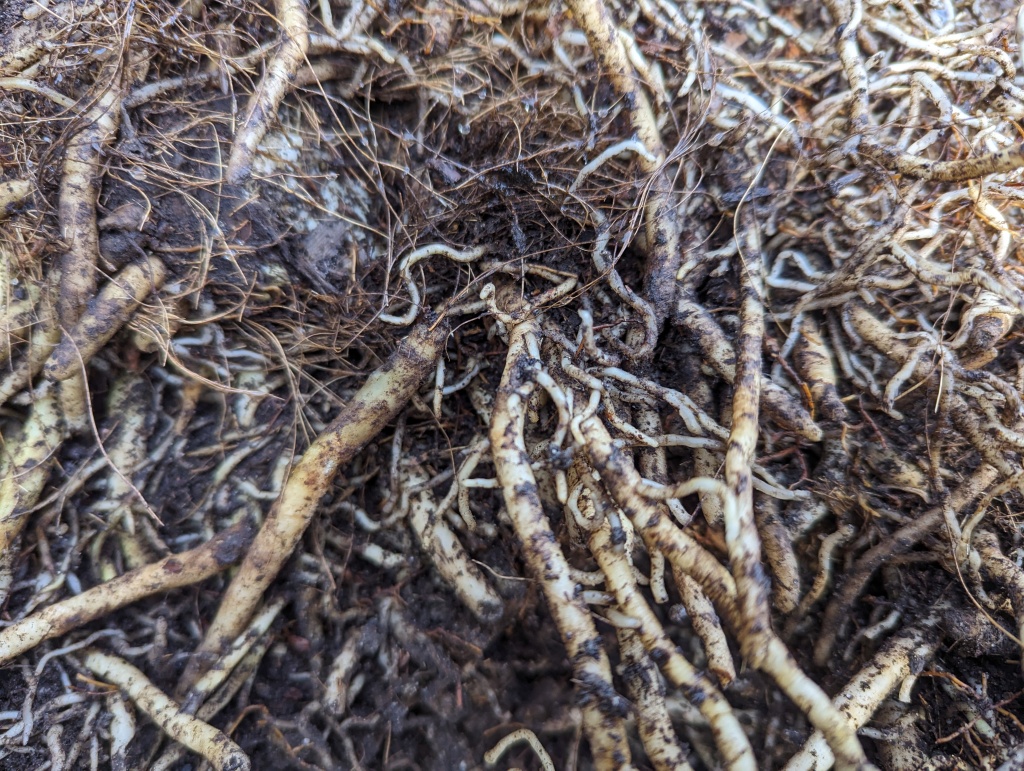
2. Rhizomes are also both impressively densely meshed and fleshy. Division is no simple task. I separated these scraps by cutting their roots. I bury them between divided shoots.
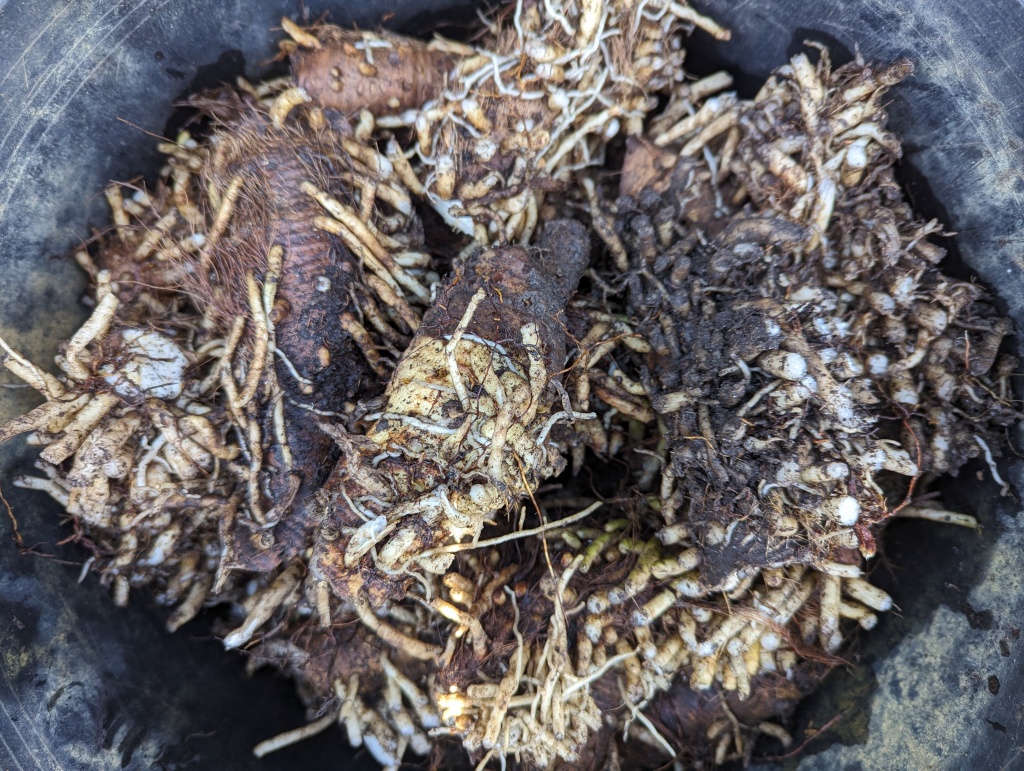
3. Foliar shoots or rosettes with a few inches of their rhizomes will grow into new plants. These have been groomed, so are ready for plugging with scraps of rhizomes in between.
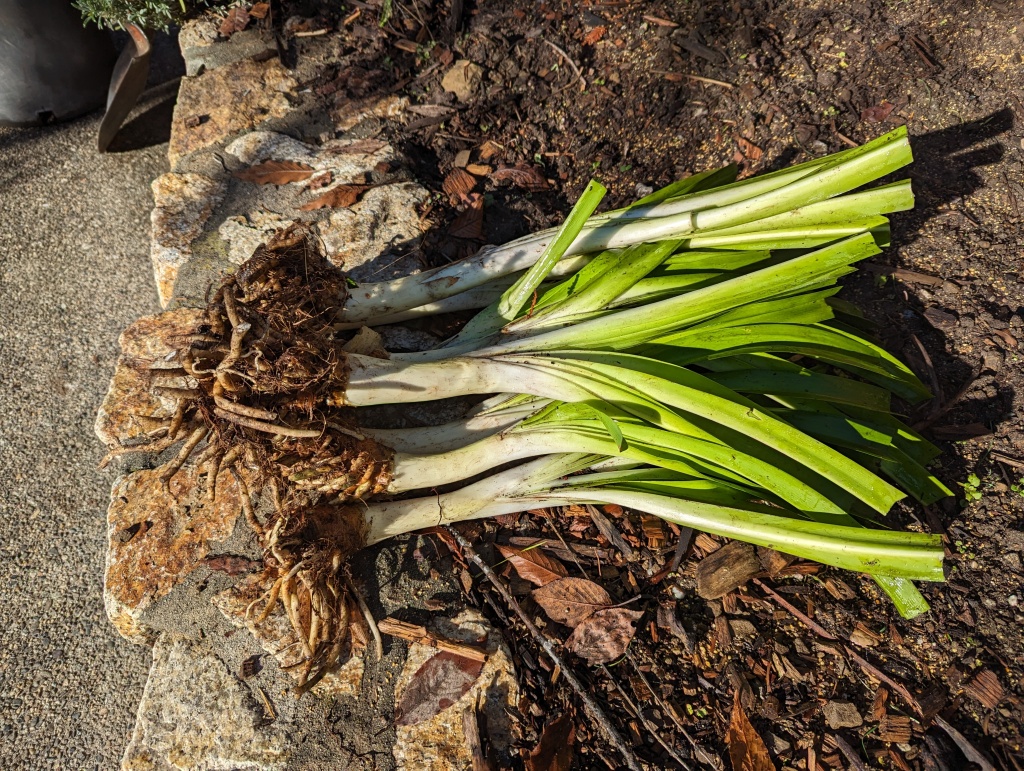
4. Gophers claimed all but a few lily of the Nile that were plugged here last year. I should have taken a picture of their replacements here, even if they are not much to brag about.
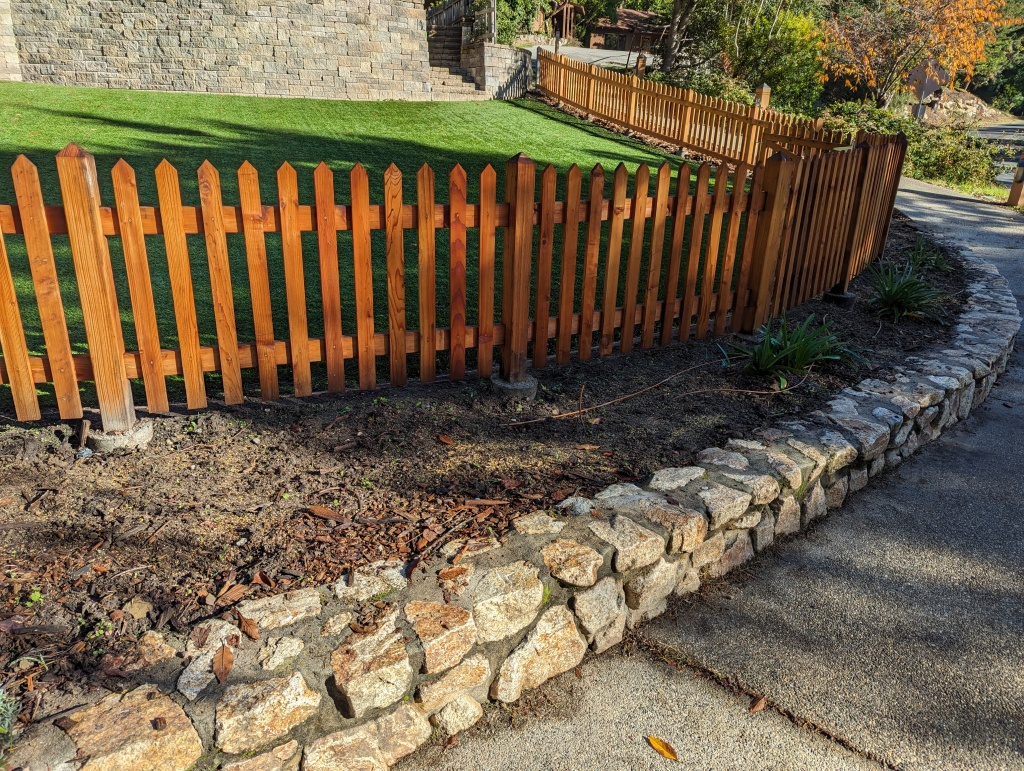
5. Oh deer! We are very fortunate that deer avoid the landscapes here. They always have.
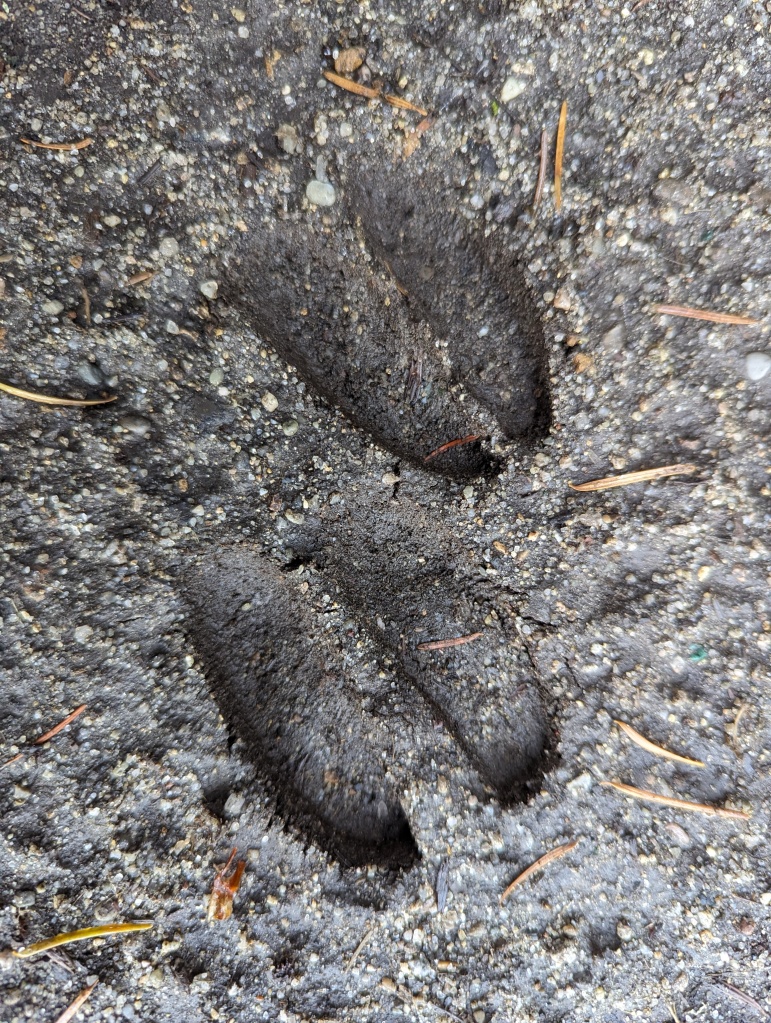
6. Sugarcane is growing like a weed. This is one of too many cuttings that I brought from Los Angeles. They were pruning scraps from what I believe to be ‘Pele’s Smoke’. Sweeet!
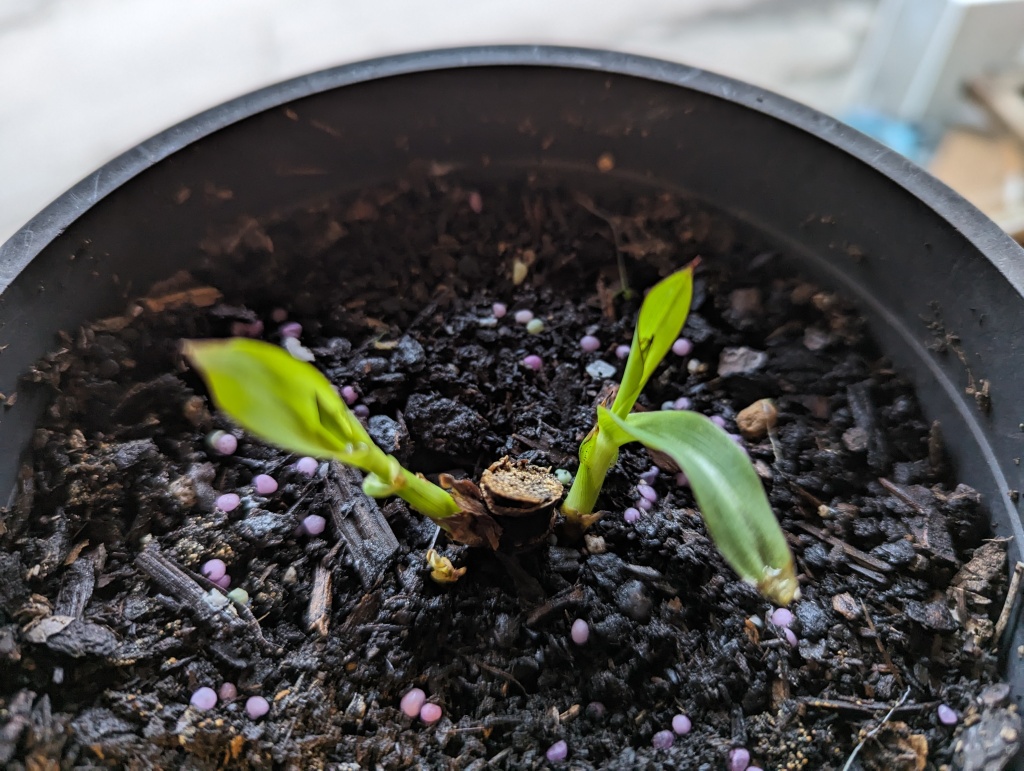
This is the link for Six on Saturday, for anyone else who would like to participate: https://thepropagatorblog.wordpress.com/2017/09/18/six-on-saturday-a-participant-guide/
So you cut off a lot of the roots when dividing the agapanthus? That is interesting. Always pleased for a top tip!
LikeLiked by 1 person
Yes; they just make more. It makes them easier to plug. I just stick the shovel into the ground, pry it back, and drop the groomed lily of the Nile plug in like plugging rice or sugarcane.
LikeLiked by 1 person
If I can find any I will try to move the Agapanthus to a better place..like this.
LikeLiked by 1 person
It is a bit of aggressive work, but it is the most efficient means with which to propagate them. Slicing off clumps of rhizomes and relocating them intact works, but does not generate any more than what was started with. People think that ‘the bigger, the better’ with such clumps, when in fact, one clump that is two feet wide may contain enough shoots for twenty linear feet.
LikeLiked by 1 person
Most interesting and instructive as always Tony, thanks so much. Especially like the Rhody photo. I’d not let him out cruisin’ the night before garbage pickup, all those bags would be too enticing.
LikeLiked by 1 person
Lily of the Nile is ridiculously easy to grow, with is why I have been growing the same (unidentified) cultivar of it since I was in junior high school.
LikeLiked by 1 person
Or maybe Rhody is far too civilized for that.
LikeLiked by 1 person
Yes, he has no interest in that. Besides, he prefers to be chauffeured.
LikeLiked by 1 person